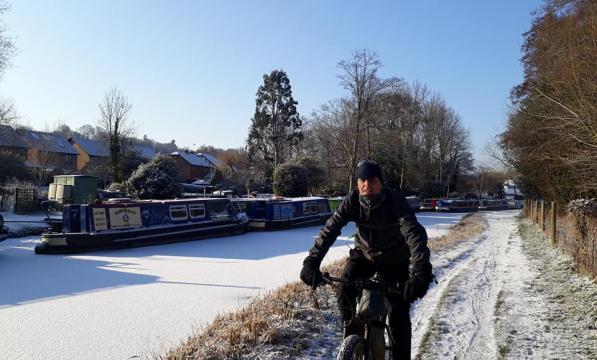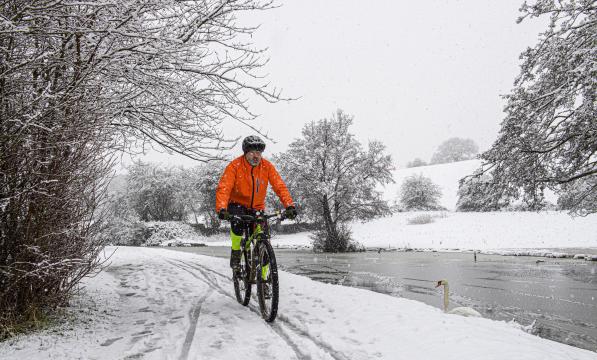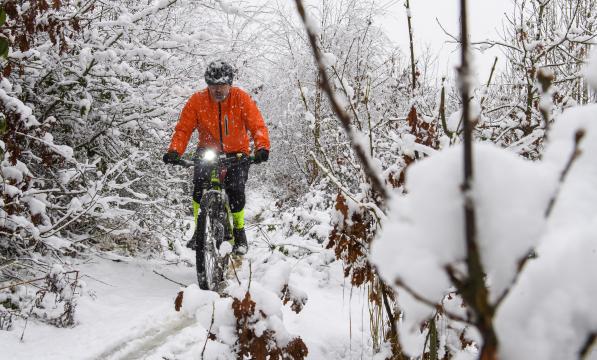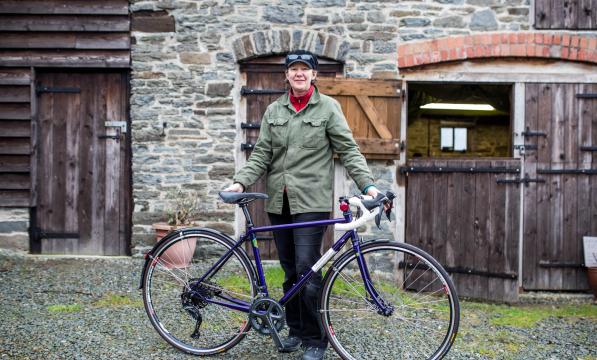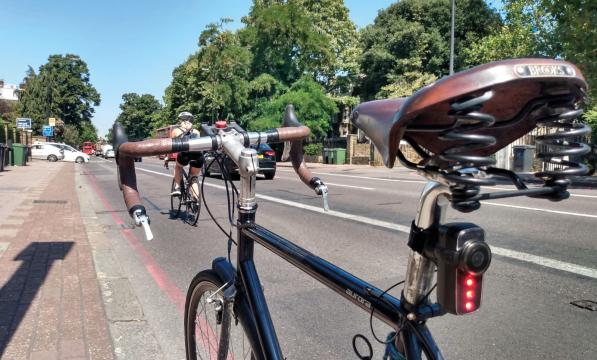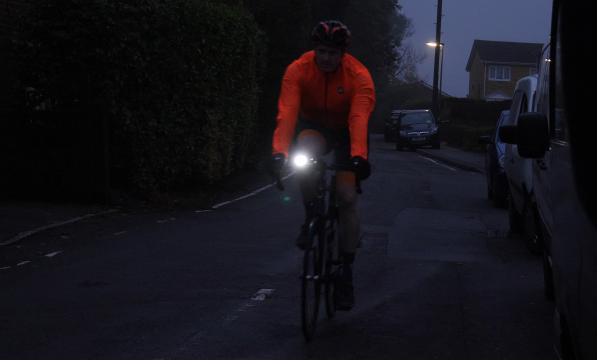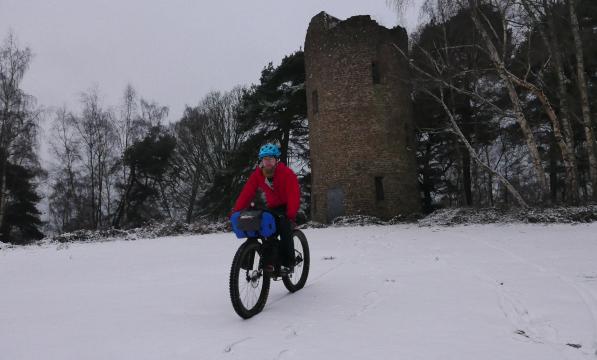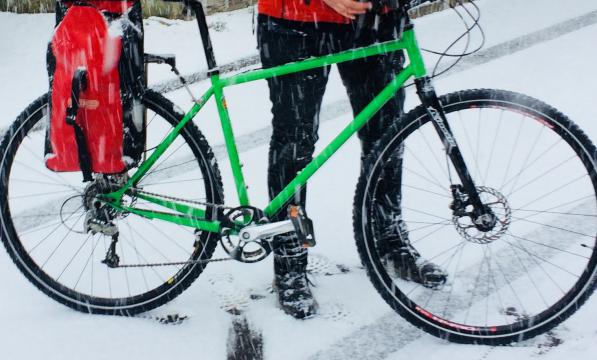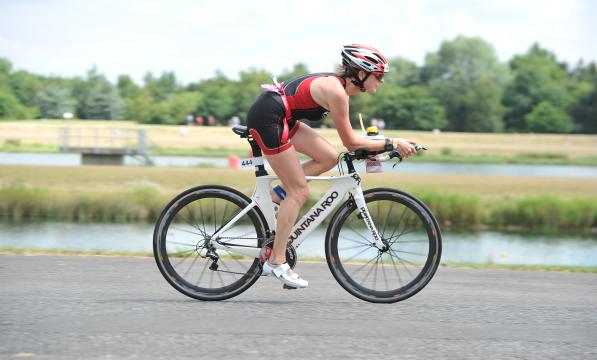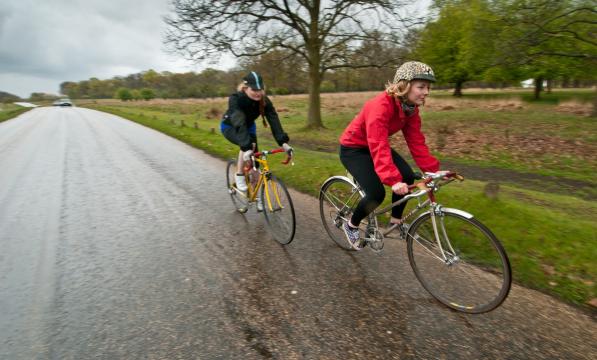Winter training tips for beginners

It’s cold, dark and miserable and getting out on the bike is a challenge for many of us when winter comes. Whether you’re new to cycling this year and want some advice, or just need some fresh motivation to keep going through until spring, we have the advice for you.
Move indoors
There are plenty of training options indoors that mean you can keep your cycling fitness and be ready and raring to go when spring comes.
Spin classes
Spin classes are high intensity cycling workouts that take place on a stationary bike. Most have a weighted flywheel linked to the pedals meaning it is a fixed gear bike - your legs are constantly moving. Most classes last for 45-60 minutes and are led by a trained instructor who will take you through a planned routine of interval training where the intensity varies throughout. There is an abundance of spin classes now – most gyms/leisure centres run regular classes several times a week and there are even specific spin studios. As group exercise is generally good fun and a useful motivator for most people, this is a good way to get plenty of cycling miles done through winter without having to get cold and muddy.
Turbo training
Similarly sticking to the indoor cycling theme, try turbo training. Turbo trainers come at a variety of price points starting at relatively cheap basic trainers (or rollers) working up to modern smart trainers that will adjust the resistance for you. Using your own bike, turbo sessions mean it's easy to fit in training rides and you can avoid the worst of the weather.
Interval training
Indoor training by using a turbo or spin bike also makes it easy to do interval training. Research has proven this to be far more effective at producing fitness gains than long, steady efforts. Long gone are the days of riders putting in hour after hour of ‘base’ miles through winter – it just isn’t effective and is likely to result in long term injuries. Short, high intensity efforts through winter mean that you will have a better level of fitness for longer rides when the good weather comes back.
Resistance training
Tried the gym? Winter can be a good time to build up your strength or do high intensity training that isn’t possible during the busier summer months when there are lots of rides and events. Resistance workouts can give you a foundation of strength and endurance that will benefit you when you go back out on your bike. And because you'll be doing less riding, it’s possible to do high effort strength training and give yourself enough time to recover from workouts that will ensure you don’t over train.
It doesn't have to involve expensive memberships either. Simple (though not easy) bodyweight workouts that you can do anywhere (including at home) will develop good all-round strength as well as increasing your core strength. Relatively cheap equipment like resistance bands or suspension training (like TRX) can be used for multiple exercises and will give you variety and progression.
Developing a strong core will not only help prevent injury but increase your stability and efficiency on the bike.
Get properly kitted out
Nobody wants to be cold and wet and it is often cited as one of the main reasons for not cycling through winter. With a little planning and some sensible purchases however, the weather need not be a reason to stop riding.
The key to staying warm is layering – it’ll be better to wear several layers of clothes rather than one thick layer. It will not only be more efficient at retaining your body heat but means that as you warm up through exertion you will be able to take clothing off and remain comfortable.
Your extremities will get cold first so invest in good gloves, consider a cycling cap or a buff and some good socks will keep you warm. Waterproof overshoes are also extremely practical as once your feet are wet, they will get cold and wont warm up quickly.
Other waterproof clothing like jackets and tights/trousers will also be beneficial for making sure you stay comfortable on the bike. If you can keep yourself warm and dry, getting outside and putting in the miles will be much easier to do and more enjoyable while you do it.
We have plenty of advice on what cycle clothing to wear when it's cold and how to keep your fingers and toes warm.
Get your bike winter ready
There’s much more to think about with the bike in winter, and if you are not winter ready you won’t be riding for long. Make sure you have a good set of lights as not only are the days shorter, but bad weather will reduce visibility. Mudguards will be essential if you are riding in a group and want to try and keep the worst of the mucky roads from your clothing and bike.
Changing your tyres to a more-puncture resistant type will help reduce the number of punctures you get – something that’ll happen more in winter with wet roads and increased debris. And keeping your bike clean and well maintained will take more time in winter due to the conditions, especially if roads have been gritted/salted. Without a bike in good working order you won’t be doing much riding.
Ride to the conditions
You’re likely to come across wet roads, or icy conditions, especially if you go out early in the morning or you are riding on quieter roads. It doesn't mean you can’t continue to train but you may have to adjust your riding style.
Accept that you may have to take it easy and ride slower than you are accustomed to in order to stay upright. Concentrate when cornering by taking a wider, slower line, especially if you don’t know the roads, as this is when you are most likely to slide out.
If you're not confident riding on wet or icy roads, go with a partner or cycling club.
Be flexible with your plans
A helpful tip for getting the miles in during winter is to remain flexible. If you do want to avoid the worst of the weather, check in advance what the forecast is and try and ride when the weather is at it’s best. If you can be more flexible over which days you ride, or the time of day you go out, you’ll get the best of the conditions.
Don’t be afraid to cut a ride short either. It’s better to do less, but enjoy it, rather than stay out too long and end up cold, wet and lost in the dark.
Commute
Summer rides on long days are great, but when the nights draw in it can be harder to fit in. But if you’re still inclined to get the miles under your belt, why not try commuting by bike?
Even if it’s a short journey from home to work, do it each way for five days a week and the distance soon adds up into a sizable chunk of training. Depending on your journey it may also be able to fit in some intervals, or hill climbing, and by riding the same route means you can track your progress if you want to.

